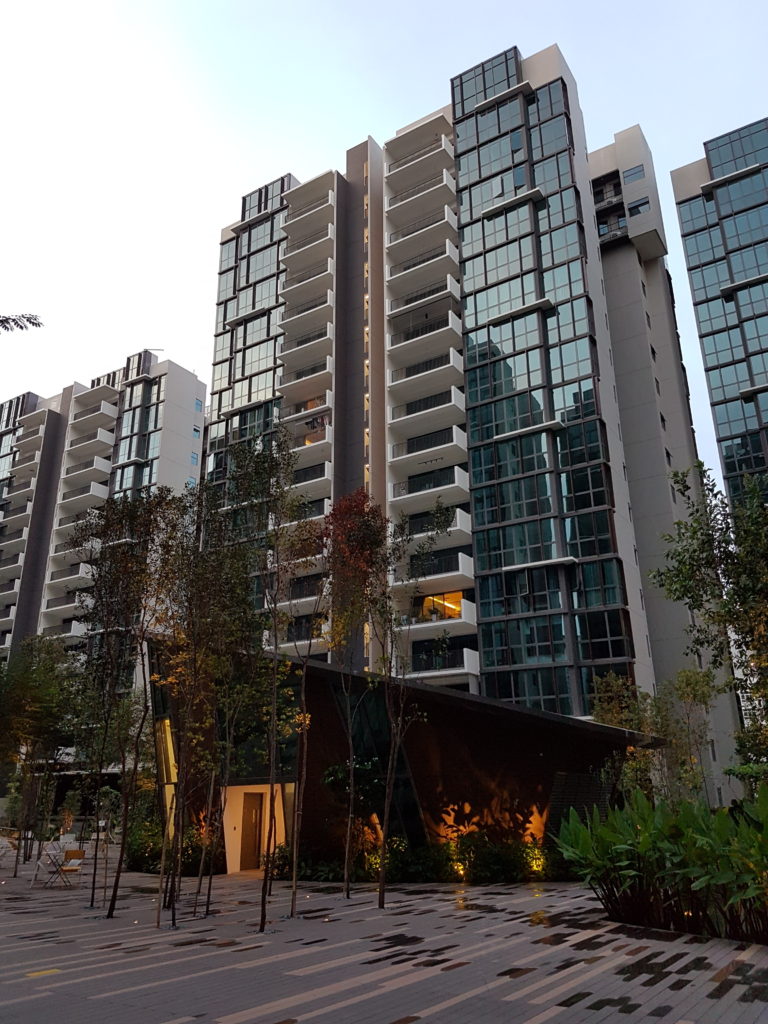Behind the Scenes of The Property Market
Ten years ago, I began my real estate journey when I just started a family. My first property was a 5-room HDB flat in Bedok. That property let me made my first pot of gold when I sold it at the peak of the 2013 property market. Back then, we had decided to downgrade to a 3-room HDB flat in Bedok. Subsequently in 2017, my family upgraded to an Executive Condominium (EC) in Punggol – The Terrace.
As I look back at my family’s financial journey, I can’t help but marvel how property had indeed played a significant part in my life’s progression. No doubt about it, if you played the game right, real estate can truly unlock value for you. As we are approaching the 5-year Minimum Occupation Period (MOP) for our EC, we are considering the next step forward. So when property blogger, Vina Ip, invited me to review her book – Behind the Scenes of The Property Market – I thought it was really god-send.
Incidentally, this is the second book review that I am doing for Vina. In 2014, I had done a review on her book “No B.S. Guide to Property Investment – Dirty Truths and Profitable Secrets to Building Wealth through Properties”.
Although I am a financial blogger, I must confess that I have not been following the property market closely in recent years. Apart from providing insights on the new government policies on property curbs and guest posts from property bloggers, I have not been writing articles on the property market.
Vina’s latest book gives me the opportunity to keep myself updated on the latest developments in the property market, and at the same time, enables me to make a more informed decision in my next property purchase. In this article, I will share my thoughts from reading the book.
Why you should read it
Regardless you are a newbie looking for a property for own stay or for investments, you should read the book “Behind the Scenes of The Property Market” before making the big-ticket decision of buying a property.
Personally, this book is useful and timely because my family is considering whether to downgrade to a bigger HDB flat or upgrade to a bigger condominium when the MOP for my EC is up. Like many, my research is mainly based on online articles written by property agencies or sponsored articles by property developers. In this regard, sometimes I wonder if the information is biased.
In Singapore, the media and the real estate stakeholders share a very intricate relationship as the latter provides important revenue source to the former through advertisements. Against this backdrop, you rarely read negative news of residential project launches or horror stories from buyers in the mainstream media. Vina Ip is a rare voice in the Singapore community as she does not make a living out of selling or buying properties. Therefore, her sharing is unbiased and honest.
In the book, Vina highlighted the new considerations for buyers when deciding to buy properties now. This is especially important in today’s context and in light of the pandemic situation. Gone were the days when buyers or investors could make explosive profits from property investments. Nowadays, one should be realistic when it comes to capital gains. A better strategy for buyers or investors might be to go for rental yield comparable to fixed income interests or stock dividends.
Handbook for property journey
Before buying that investment property, a useful tip shared by Vina is to calculate the cash-on-cash return and the net income for the first three years. Homebuyers should also check the market numbers for the past property transactions in the same area, the average rent of a similar property under current market conditions and the supply of projects that could affect the demand.
“Behind the Scenes of The Property Market” contains a lot of data on property market to substantiate the author’s views. The book also highlights various examples of residential projects in Singapore that caused buyers to lose money. Most of the time, the problem does not lie in the property itself but rather a case of trusting the wrong guy at the wrong time in the wrong place. Indeed, the key to winning the property game is not to lose money. To achieve this, we should strive not to buy the wrong property.
Most of the books on property market are either written by those who work in the real estate industry or foreign authors who write on generic real estate strategies that may not be applicable in Singapore’s context. “Behind the Scenes of The Property Market” makes a compelling read for Singaporean readers because the book covers mainly Singapore property landscape, our local culture and the applicable housing regulations.
In addition, Vina is different as she does not work in the real estate industry. Given that she has no vested interest in the industry, her views and opinions are considered objective and non-biased.
Addressing the property market mysteries
Reading the book, it does feel as if Vina is speaking to me because the topics address many questions that I always have at the back of my mind. For example, is it true that new launches offer more value for money as compared to resale projects? Is it true that property prices in Singapore will always go up? Through various data and detailed explanations, “Behind the Scenes of The Property Market” takes the readers through the dynamics and behind the scenes of the property market.
A reader once asked for my views on investing in overseas properties. This issue is addressed in the book as well. Overall, my thoughts are aligned with the author in that investors must be more discerning and exercise caution when buying overseas properties. Very often, government policies restricting foreign ownership may change rapidly. Economic conditions may also change and lead to currency fluctuations that may not swing in your favour.
But I reckon one of the hottest topics among Singaporeans must be aging HDB flats, especially those with remaining lease of less than 60 years. In the book, Vina shared six lessons learned from the discussions on aging HDB flats. Basically, when it comes to buying older HDB flats, buyers should have the right mentality. Given that only 4% of HDB flats were selected for SERS (Selective En bloc Redevelopment), one should not buy older HDB flats with speculation or expectation of SERS. It is also not realistic to expect the resale prices of older HDB flats to keep rising when the lease is expiring.
Conclusion
Although the focus of the book is exposing the secrets of the real estate industry, the spectrum of topics covered is actually very wide. What make this book unique is that the author peppered a lot of her thoughts and views in the topics without being come across as too preachy. Overall, a very well-researched book written in the context of Singapore landscape. “Behind the Scenes of The Property Market” can be bought through this link.







Pingback: Behind the Scenes of The Property Market – SG Wealth Builder – Anthony Jerdine